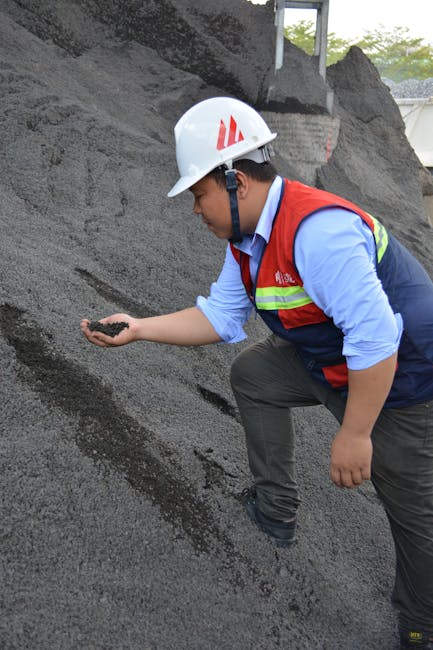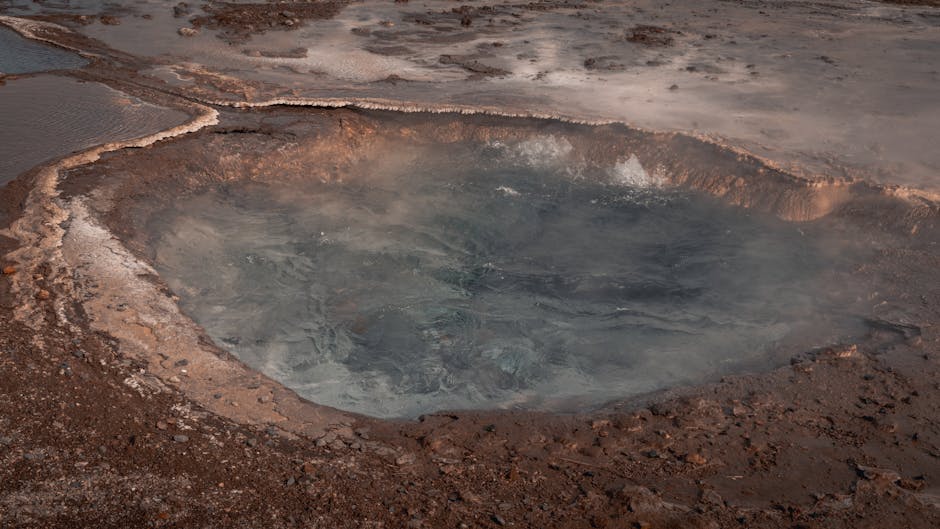Greenland’s Mineral Rush: Unpacking the Geopolitical and Environmental Implications of the Emerging Mining Boom
Greenland’s Untapped Mineral Wealth: A New Frontier
Greenland, the world’s largest island, is experiencing a dramatic shift. For centuries, a largely untouched landscape, it’s now at the forefront of a burgeoning mineral rush. Its vast reserves of rare earth elements, uranium, zinc, iron ore, and other critical minerals are attracting significant international interest, sparking a complex interplay of economic opportunity, environmental concerns, and geopolitical maneuvering.

The Allure of Rare Earth Elements
The primary driver behind this mineral boom is the global demand for rare earth elements (REEs). These 17 elements are crucial for the production of advanced technologies, including smartphones, wind turbines, electric vehicles, and military hardware. Greenland possesses significant REE deposits, making it a potentially pivotal player in the global supply chain. This strategic importance has attracted investment from various countries, each with its own political and economic agendas.
China’s Dominant Position and Greenland’s Potential
China currently dominates the global REE market, controlling a substantial portion of the processing and refining capacity. Greenland’s potential to diversify this dominance, offering an alternative source of REEs, is a major factor driving international interest. However, this also raises concerns about China’s potential influence and investment in Greenland’s mining sector.
Geopolitical Stakes and International Competition
The Greenland mineral deal is not merely an economic issue; it carries significant geopolitical weight. The strategic location of Greenland, bordering the Arctic Ocean and close to North America, makes it a focal point of power dynamics between major global actors. The United States, Canada, and European nations are keenly interested in securing access to Greenland’s resources and preventing undue influence from other countries, particularly China and Russia. This competition is reflected in the various investment proposals and agreements being negotiated.

The Role of the United States
The United States has expressed a strong interest in securing a reliable supply chain for critical minerals, viewing Greenland as a key partner. This interest is driven by national security concerns and the need to reduce reliance on China for these essential materials. Increased US engagement in Greenland’s mineral sector could involve investment in infrastructure, technology transfer, and joint ventures with Greenlandic companies.
European Union Involvement
The European Union is also actively seeking to diversify its sources of critical minerals, recognizing Greenland’s potential to contribute to this goal. EU initiatives may focus on funding sustainable mining practices, providing technical expertise, and collaborating on research and development projects related to REE extraction and processing.
Environmental Considerations and Sustainable Mining
The extraction of minerals, especially in a fragile Arctic environment like Greenland, raises significant environmental concerns. Potential impacts include habitat destruction, water pollution, and greenhouse gas emissions. Balancing economic development with environmental protection is a critical challenge that Greenland faces. International pressure is mounting for the adoption of stringent environmental regulations and sustainable mining practices.
Greenland’s Commitment to Sustainability
The Greenlandic government has emphasized its commitment to sustainable development, aiming to minimize the environmental footprint of mining operations. This commitment is reflected in its efforts to establish robust environmental impact assessments, promote responsible waste management, and foster collaboration with environmental organizations. However, achieving true sustainability requires significant investment in technology and expertise.
Challenges and Opportunities
Despite the potential benefits, several challenges remain. The remoteness of Greenland’s mineral deposits poses logistical challenges, increasing the cost of extraction and transportation. Developing the necessary infrastructure, including ports, roads, and power grids, represents a substantial investment. Furthermore, ensuring the fair distribution of economic benefits among the Greenlandic population is crucial to avoid social inequality.
Capacity Building and Local Expertise
Developing local expertise and capacity is essential for Greenland to benefit fully from its mineral resources. Investment in education and training programs for Greenlandic workers is vital to ensure their participation in the mining sector and prevent a dependency on foreign labor. Building a strong regulatory framework and ensuring transparency in all aspects of the mining operations are also critical.

The Future of Greenland’s Mineral Sector
The future of Greenland’s mineral sector depends on a delicate balance between economic development, environmental protection, and geopolitical stability. Sustainable and responsible mining practices are essential to avoid the negative environmental consequences often associated with large-scale extraction. Open and transparent governance, coupled with meaningful engagement with local communities, are necessary to ensure that the benefits of the mineral boom are shared equitably.
Balancing Economic Growth with Environmental Stewardship
Greenland has a unique opportunity to demonstrate how economic growth can be achieved in harmony with environmental stewardship. By prioritizing sustainability and responsible mining practices, it can become a model for other Arctic regions facing similar challenges. This requires strong international cooperation, investment in renewable energy sources, and a commitment to long-term environmental monitoring.
International Collaboration and Transparency
Transparency in all aspects of the mineral sector is paramount. Open access to information, including environmental impact assessments and revenue sharing agreements, is crucial for building public trust and ensuring accountability. International collaboration, particularly in terms of sharing best practices and technology, can play a crucial role in supporting sustainable mining in Greenland.
Conclusion: Navigating the Complexities
Greenland’s mineral deal represents a complex and multifaceted issue with significant economic, environmental, and geopolitical implications. Navigating this complex landscape requires careful consideration of all stakeholders, a commitment to sustainable practices, and a focus on equitable benefit-sharing. The success of Greenland’s mineral sector will depend not only on the extraction of resources but also on the ability to manage the associated risks and opportunities responsibly, ensuring a sustainable future for this unique and vulnerable Arctic nation.






